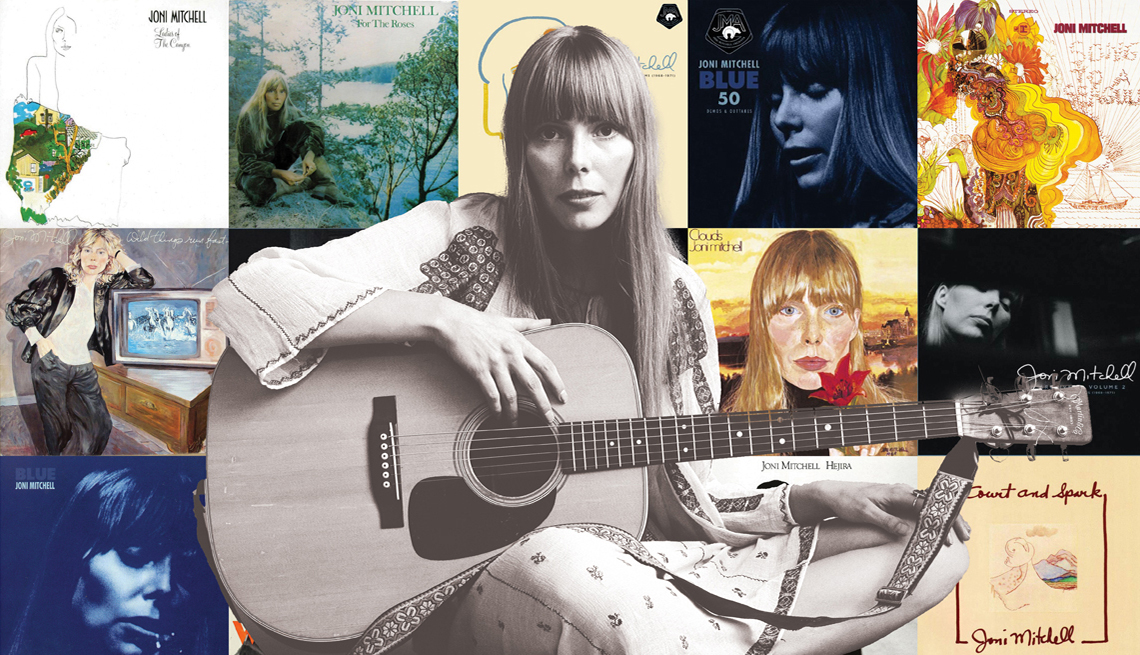
Essay: how joni mitchell’s genius connects a mom and daughter | members only access
- Select a language for the TTS:
- UK English Female
- UK English Male
- US English Female
- US English Male
- Australian Female
- Australian Male
- Language selected: (auto detect) - EN
Play all audios:

I’m 62, but my 14-year-old self is feeling pretty darn proud these days. That’s when, in the early 1970s, my closest friends and I couldn’t get enough of Joni Mitchell. It’s odd to recall,
but in those days we Joni devotees were often slipped into a stereotype. Like our muse, we were viewed as too romantic, introspective and sensitive. Too moody, blue and self-absorbed.
Couldn’t we be more upbeat, a little more Olivia Newton-John? Fast forward to 2021, and my teen posse looks more like seers, our excellent musical taste validated — indeed, vindicated.
Joni’s star has risen. The label pinned to her now is _genius_. If she ever wondered about her own “dent in the universe” — Steve Jobs’ phrase for leaving a mark on the world — she needn’t
any longer. In December, she will be honored for lifetime achievement at the John F. Kennedy Center for the Performing Arts in Washington, D.C. In January 2022 she will receive the MusiCares
Person of the Year award. The Grammy Lifetime Achievement Award was bestowed on her in 2002. At the same time, Joni’s album _Blue_, whose 50th anniversary was celebrated in June by NPR,
Spotify and the national press, has found a second life. Two years ago, folk-rock musician Brandi Carlile performed all 10 of _Blue_’s songs in L.A. In November 2021, she reprised the
concert at Carnegie Hall, singing the record that ranked number 1 in an NPR poll of The 150 Greatest Albums Made by Women. I’m proud that my best friends and I, barely a step into
teenagerhood, ignored the Joni eye rolls. When _Song to a Seagull_ (1968), _Clouds_ (1969), _Ladies of the Canyon_ (1970), _Blue_ (1971), _For the Roses_ (1972) and _Court and Spark _(1974)
circled our portable record players, we trusted the sounds of pure artfulness. “Emily and I still laugh about the afternoon in fifth grade when her school librarian spoke the words: ‘Don’t
it always seem to go, that you don’t know what you’ve got till it’s gone.’ Emily’s hand shot up among 15 quiet listeners. ‘That line was written by Joni Mitchell.’” We were mesmerized by
story-songs with characters we’d never met — Trina in wampum beads, Marcie in a coat of flowers. Songs that fused poetry and prayer, as everyone knows who has ever sung along to “Woodstock.”
Songs that mapped a woman’s heart. Songs more like a flower’s essential oil than the flower itself. I think back to 1973 and remember the day _Blue_ joined my record collection. I was in
eighth grade, home with a cold and fever, and preyed on my mother’s sympathies. “Please,” I said from under my pink bedspread. “Will you go to Korvettes after your errands? There’s this
album, _Blue _by Joni Mitchell, and I want to learn the songs by heart.” To my great surprise, my mother came into my room that afternoon record in hand. Sealed in the cellophane wrapper, I
studied the haunting cover — a female face, serious and sad, dissolved in a blurry palette of blue. Little did my mother know that in handing me _Blue_, she was opening the door to precisely
what she wanted to keep out — womanhood. That same year, my mother refused to let me get my ears pierced because it smacked of grown-up femininity. That same year, my mother prohibited me
from attending coed parties without chaperones for fear those games of spin-the-bottle would spin out of control. Eventually I’d understand each “no” had roots in forces far beyond her
temperament. I came of age in a chasm called a generation gap. Mothers shaped by World War II, the baby boom and the retreat into family. Daughters shaped by the Vietnam War, the women’s
movement and birth control pills that made it possible. Into the maternal silence on love and sexuality stepped Joni. In melody and poetry, she supplied the one kind of knowledge we teen
girls really cared about—lessons in the School of Life.
